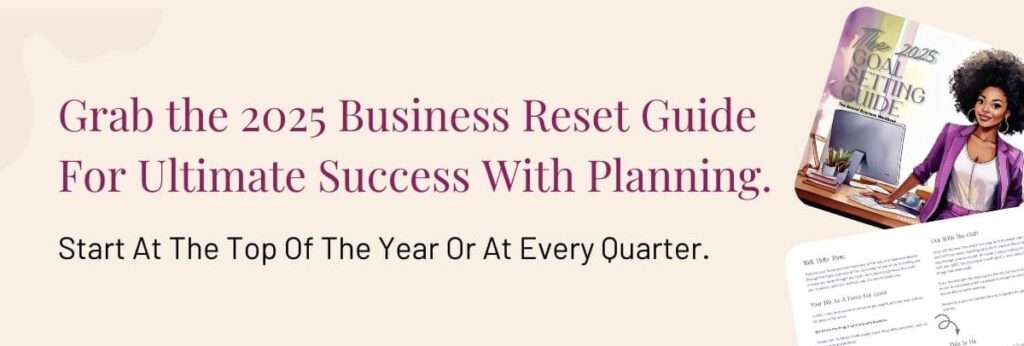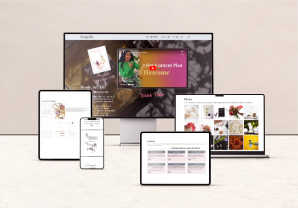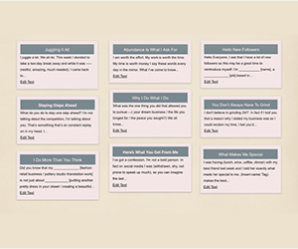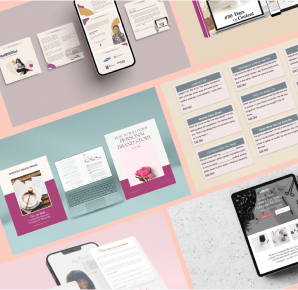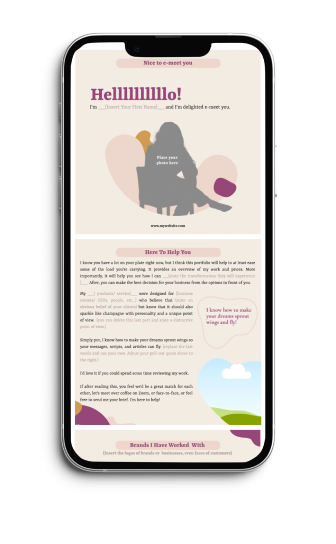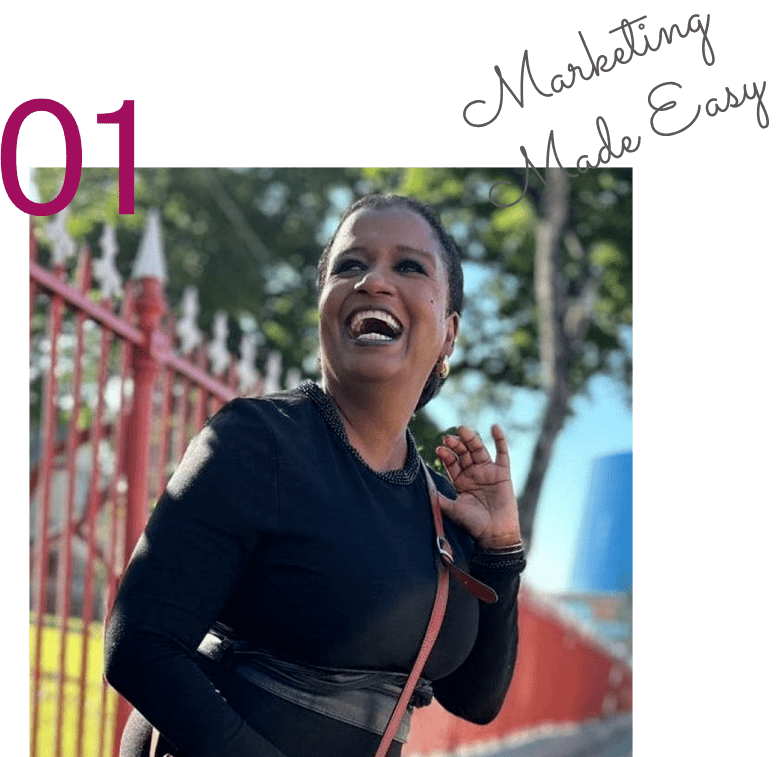I’ve always been the kind of person with a plan—a dreamer with a deadline. It’s earned me admiration, sure, but also whispers that I’m ‘too focused. Funny how ambition can carry both applause and critique in the same breath.
Table of Contents
ToggleBut that kind of intentional planning led me to sit as a leader in several roles—from President of the debate team in high school to running a 7-figure business I founded in my late twenties and strategising large communications programmes for multinational companies.
Planning for success works. Goal setting works.
But here’s the thing that confuses a lot of small business entrepreneurs.
Here’s where many small business entrepreneurs get it wrong:
They think hitting their goals is all about staying motivated and jotting down dreams on paper at the start of a new year or business quarter.
But the real deal is that’s just the adrenaline talking—the spark that gets them to start.
And while adrenaline can ignite action, it’s rarely enough to sustain the follow-through required to achieve something big.
Now, I’m not saying BOLD, COURAGEOUS goals are unrealistic.

I’m just here on these Internet streets to say motivation can’t hold a candle to intention and action.
And by intention, I mean the “how” behind the dream, and by action I mean the “when” behind the steps you must take.
And, I hate to tell you this, but everything comes down to good planning—not just the big moves but also the tiny details too.
Whoop!
Before moving on I want to give myself a quick pat on the back.
I’ve done a lot of planning for multinationals—not just budgets for PR, marketing, and communications programmes, but also all the local market initiatives that accompany a global strategy.
I’ve done it for companies like Samsung, Petro Canada, Microsoft and a myriad of others
I’ve also worked alongside lean, creative small businesses.
And here’s what I’ve learned.
Whether you’re working with boundless resources or squeezing magic out of what fits in a thimble, the approach to creating sustainable goals stays the same.
At its core, planning is about four things: reflection, intention, direction, and action.
And let’s not forget the power of a good refocus—checking in to keep goals sustainable or tweaking them without that sinking “I’ve failed” feeling.
This is especially true for my small biz owners.
So today, let’s talk about how to set goals that actually work for your business in 2025.
When I wrote this, I focused on what has worked for me over the years, as well as the work I put into the Business Reset Guide I first wrote years ago.
That first draft of my Guide allowed me to downsize my PR agency and begin anew as a digital entrepreneur with a tiny team and yet still maintain success.
So I want to share exactly how I plan at the start of a year and also at each quarter.
Now, of course I know there are a million and one ways to plan a success path for your biz.
There is no right way,
But what I’m about to share is my system. One that has helped me build streams of profit into my business
MORE importantly, it’s helped me to have fun while serving others. I get my message out and hopefully lead with legacy along the way.
Let’s do this deep dive now.
Step 1| To Set Goals For Your Business You Need Reflection
- You’re stuck in traffic, passing by an old client’s office. For just a fleeting second, you wonder: Could we work together again?
- It’s the end of a long day. Holiday traffic feels endless, your hands are busy wrapping gifts, and out of nowhere, AI sneaks into your thoughts. You think: How could I use it more in my business next year?
Between grocery runs, holiday baking, and hosting duties that stretch you thin, tiny sparks of inspiration flicker … and then they’re gone.
But let’s be honest: how often, in the swirl of December, heck at the end of every quarter do you stop to reflect—deeply—on the year (or 4 months) that’s just passed?
Here’s what I always preach on my coaching calls about goal setting.
If you want your goals to grow and sprout wings, if you want your dreams to soar, then you need stillness.
Stillness to look back, to take notes, to let the stories of the year gone by speak.
I read Eckhart Tolle every year. It’s helps quiet my mind.
He says stillness should guide our thoughts and actions. And he’s right.
For me, that looks like pulling out a notebook— my Business Reset Guide—and putting pen to paper.
Using the questions in the Guide I document what worked, what didn’t, what stretched me, and what didn’t serve me in 2024.
Sometimes I know the answers.
- The product launch that didn’t go as planned.
- The employee who changed everything.
- The global shift that rocked my industry.
But writing them down when I’m still activates a kind of intelligence that doesn’t live in spreadsheets or slides but deep in my gut.
It’s the kind of clarity that tells me what to double down on and what to let go of.
This is where intentional planning begins.
Sometimes, we push so hard we forget to stop. We don’t breathe. We don’t think. We don’t give ourselves the grace to be still.
Learning How To Reset The Hard Way
I learned that the hard way.
I remember the moment clearly: Alicia (she’s been my accountant for over 20 years ) and I were sitting at the table, stacks of papers around us, reviewing the accounts from my agency.
The numbers were very solid, but my life? It wasn’t. I’d been running at full speed, chasing revenue without a second thought about what it was costing me. (#neverstoppingworkbecauseIwasoverloaded, anyone?)
That’s when I realized something had to give. I needed to carve out a way to sustain the same results but with far less stress.
That clarity didn’t come all at once—it came from reflection. From writing it down.
From looking back at what worked, what didn’t, and why. My Business Reset Guide grew from that season—a way to map out what mattered most, so I could move forward with intention, not chaos.
Hello, sweet freedom.
Action Step
Take a time-out. You can’t move forward if you don’t take a long, hard look back.
Reflect.
And allow those reflections to tell you stories that will guide you forward.
No 2| Write Down The Direction In Which You Want To Go
Just because you’ve chosen a big direction for the year doesn’t mean the drive can’t shift every quarter.
This is one of my favourite parts of planning: setting that big, overarching theme that guides everything else.
I always start with a simple question: “What’s your theme for the year?”
Let’s say I choose abundance—the word that feels like it’s calling to me the most.
Now, here’s where most people stop.
But to make it more than just a word, I take it a step further. I define its meaning and then break them down into steps.
Because here’s the truth: if you don’t break it down into actionable steps, the big dreams have a funny way of staying just that—dreams.
For me, abundance can mean many things: wealth, time freedom, and health. In my Business Reset Guide, I dedicate at least ten pages to money alone.
When I sit down to reflect on the stories the year has told me, I might realize: I need to double my income in 2025. That’s my big direction.
But clarity doesn’t stop there. By the end of the exercise, I might map out steps like these:
- Monetize my email list.
- Launch three times a year.
- Add three low ticket selling periods between each launch.
- Double the revenue from my coaching calls.
See how it works? That’s my definition of abundance—a tangible, actionable path to more.
But let’s not pretend life doesn’t throw curveballs.
You could get sick. You could win the lottery (hey, we can dream). Suddenly, abundance might no longer mean doubling your income—it might mean something else entirely.
That’s why the big direction isn’t set in stone. You have to come back to it, every quarter, and ask: “Does this still fit? Is this still right for me, for this season of my life?”
And that’s the thing about goals—they need flexibility. The ability to grow, shift, and align with where you’re at right now.
This is what I love about working in quarters. In my Reset Guide, there’s space for this rhythm—a section to map out the big picture, then reset quarterly goals and break them into daily, tangible steps.
Because planning isn’t just about dreaming—it’s about doing.
Action Step:
Find a planner you love and map out your year’s big theme. Define what it means to you. Build flexibility into the process so you can reset, realign, and refocus each quarter.
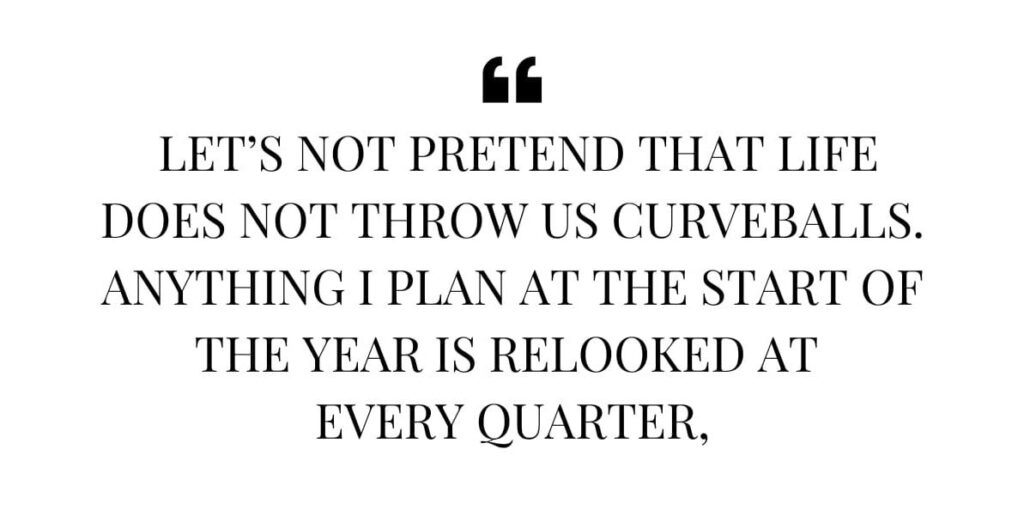
No. 3| Set Goals With Intention
Let’s rewind for a second—remember when we talked about intention? And how that rush of New Year motivation isn’t enough to carry you when things get hard?
Here’s the truth: to get from direction to action, you need a bridge. A steady, intentional path that carries you through the year—or even just the quarter—without letting overwhelm take the wheel.
If you’ve set your direction, the next step is crystal clear: you’ve got to set your intention.
You can’t rely on motivation alone.
Why? Motivation is fleeting. It flares up when things feel new and exciting, but fizzles the moment the work gets hard. And when it does (because it will), intention is what steps in to keep you going. It’s the framework that transforms big, dreamy goals into something you can actually sustain.
When it comes to setting business goals, declaring your intention isn’t optional—it’s foundational.
Here’s where it gets real: specificity is everything.
Specificity is what keeps the wheels turning when motivation runs dry.
Specificity Turns Goals Into Action
Ask yourself:
When, where, and how will I pursue this new goal—or adjust it when life happens?
Take blogging, for example. Deciding to “write a blog post every week” isn’t enough. It’s too vague. And let’s be honest: the likelihood of monetizing your blog within your timeline is slim if that’s all you’ve got.
Instead, dig deeper:
- When will I start researching monetization strategies?
- What specific steps will I take to make earning money feel seamless?
- How will I measure progress before I hit my goal?
See what’s happening here? It’s not just about having a goal. It’s about designing a path to get there.
Let’s take it a step further. Think about a goal as simple as eating healthy. You’re far more likely to stick with it if you plan: What groceries will I buy? When will I shop? Will I buy in bulk? Which recipes will I use?
That’s the difference between hoping for success and building a clear path to it.
Back to business of how to set gaols for success:
It’s easy to say, “I’ll increase my profit by 35% this year.” But unless you break it down—when, where, how—it’s like spinning a top in the mud.
Here’s the thing: goals need flexibility, too. Intentions can—and should—shift as life shifts. Revisit them. Adjust them. Make them work for you, in the season you’re in.
I won’t sugarcoat it: this part is hard.
It’s the deep work of planning, and it requires time.
I carve out space to map every intention—big or small—with clarity, purpose, and alignment to the business (and life) I’m building.
It’s about writing things down, crossing them off, tweaking, and repeating.
THIS PART IS NOT SEXY. But it’s necessary. Don’t skip it. 😉
Because here’s the magic: when you do the work, clarity shows up.
You’ve mapped the blueprint for your business. Now it’s time to hang the drywalls, fill in the deadlines, and start building.
Timelines focus your energy, keep your goals manageable, and make adjustments effortless when needed.
And that? That’s how intention turns into momentum.
Action Step:
All of the above. 💕


No. 4 | Taking Action Takes Things To A Whole New Level
This is where things start to roll. This part isn’t about perfection—it’s about ease.
It’s about arranging your time and deadlines in harmony with your entire plan.
I’ve seen firsthand how planning makes progress feel lighter in my business.
Now, it isn’t about perfection, because when I take action, I don’t always hit it out of the park.
But having a timeline action plan to reach my goals gives me a semblance of control, yes, but more importantly, it brings heaps of clarity.
What I love most about timeline-based action? You can measure what’s done—and what’s still waiting for you.
No one thrives in chaos.
Missing your mark feels heavy.
Worse yet is that creeping, sneaky feeling of envy when you see others succeeding while you’re spinning your wheels.
But I’ve written about this HERE—the best small businesses plan.
They don’t sit and wonder about success.
They don’t second-guess.
They don’t imprison themselves in overextended budgets, schedules, or expectations.
Taking action associated with the growth of your business doesn’t have to mean more cash in the bank.
It can signify building a business that’s a force for good—a business that attracts the best employees, affords you the best technology, and, yes, gives you back some time freedom.
Setting goals isn’t a wish list—it’s action.
The deadlines you set are your guardrails, steering you toward the results you want while giving you the opportunity to reset what doesn’t work.
And the beauty of planning? You can adjust your goals every quarter while keeping a long view of your progress.
In the ➡️ Business Reset Guide, ⬅️ we break the year into quarters and the quarters into days, creating a rhythm where progress feels achievable and everything stays aligned.


Set Goals That Match Your Own Reality
Here’s what I tell every small business owner I know: no one’s reality is yours, and your goals don’t have to look like anyone else’s.
It’s tempting, isn’t it?
To peek at what others are doing and feel like you should be doing more—more offers, more launches, more… everything.
But for me? Reflection brings me back. Every quarter, I make space for it.
It’s where I quiet my mind. It’s where I pause long enough to ask myself the real questions:
“Is this still what I want? Does this still align with who I’m becoming?”
And sometimes the answer is yes. Sometimes it’s no.
Either way, that pause—that intentional checking in—reminds me to keep building toward a business (and a life) that fits me, not the other way around.
Whenever You Want To Dive Deeper…
💻 1. Need to master the way you focus on your goals & looking for a planner that gets results, then mosey along to the this. It’s a planning system that works and looks pretty spiffy too. →
✏️2. Need get one-on-one coaching? From your website, to your offer, to your fur babies (dog lovers over here too). Drop us a line, tell us what your need →
📧 3 Need help with AI like pronto. Get a course, prompts on the go and a full suite of AI help.. It’s like a one time subscription box, that keeps on giving. →
🍾 1. Need to keep better focus on your numbers, see what $ are coming in and going out so you don’t leave money on the table? Get ASAP budget frameworks + templates to-go- when you swim right up to Small Biz Budget Planner →


